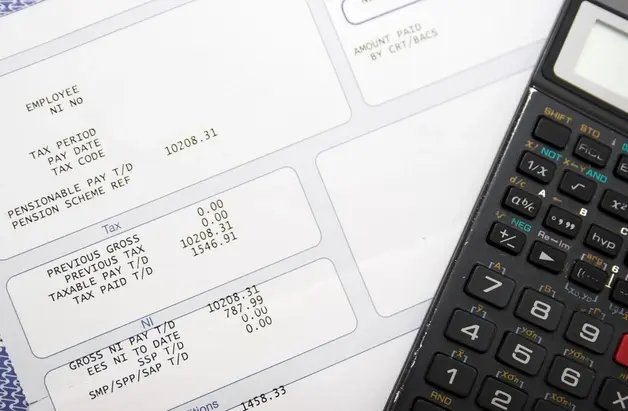How Employers Calculate Pay Stubs: A Complete Guide
Pay stubs are essential financial documents that reflect an employee’s earnings, deductions, and net pay. They serve as proof of income, help track taxes, and provide transparency between employers and employees. Understanding how employers calculate pay stubs can help employees better manage their finances and ensure accurate payroll processing.
In this guide, we’ll break down the steps employers take to calculate pay stubs and the key components involved.
What Is a Pay Stub?
A pay stub, also known as a paycheck stub, payslip, or wage statement, is a detailed record of an employee’s compensation for a specific pay period. While the check itself represents the net pay, the pay stub provides a breakdown of gross pay, deductions, taxes, and other contributions.
Employers provide pay stubs either in paper form or digitally, depending on the company’s payroll system. The primary purpose of a pay stub is to ensure employees understand how their pay is calculated and where their money is going.
Step 1: Determine the Employee’s Gross Pay
The first step in calculating a pay stub is determining the employee’s gross pay, which is the total amount earned before any deductions. Gross pay depends on the type of employment:
- Hourly Employees: Gross pay is calculated by multiplying the total hours worked by the hourly wage. For example, if an employee works 40 hours at $20/hour, the gross pay is $800. Overtime pay, usually calculated at 1.5 times the regular rate, must also be included for hours worked beyond the standard 40 hours per week.
- Salaried Employees: Salaried employees have a fixed annual salary. Employers divide this salary by the number of pay periods in a year (weekly, biweekly, semimonthly, or monthly) to determine gross pay per pay period.
- Commission or Bonus-Based Pay: Employees who earn commissions or bonuses will have these amounts added to their base pay for the relevant pay period.
Step 2: Calculate Pre-Tax Deductions
After determining gross pay, employers calculate pre-tax deductions, which reduce taxable income. Common pre-tax deductions include:
- Health Insurance Premiums: Contributions toward medical, dental, and vision insurance plans.
- Retirement Contributions: Employee contributions to retirement plans like 401(k) or pension schemes.
- Flexible Spending Accounts (FSAs) or Health Savings Accounts (HSAs): Deductions for pre-tax savings accounts.
- Other Pre-Tax Benefits: Life insurance, disability insurance, or commuter benefits.
Pre-tax deductions are subtracted from gross pay to calculate taxable income, which determines the amount of federal, state, and local taxes owed.
Step 3: Calculate Taxes
Employers are responsible for withholding the appropriate taxes from an employee’s paycheck. Taxes typically include:
- Federal Income Tax: Based on the employee’s W-4 form and IRS tax tables. The withholding amount depends on filing status, exemptions, and allowances.
- State and Local Taxes: Depending on the employee’s state or municipality, additional income taxes may be withheld.
- Social Security Tax: A mandatory 6.2% of taxable income up to the annual wage limit.
- Medicare Tax: A mandatory 1.45% of taxable income, with an additional 0.9% for high earners.
Employers must stay current with tax rates and regulations to ensure accurate withholdings.
Step 4: Calculate Post-Tax Deductions
After tax deductions, employers subtract post-tax deductions, which do not reduce taxable income but still affect net pay. Common post-tax deductions include:
- Garnishments: Court-ordered deductions for child support, alimony, or debt repayment.
- Union Dues: Contributions to labor unions.
- Other Voluntary Deductions: Charitable contributions, life insurance, or loan repayments.
Subtracting post-tax deductions from the remaining pay ensures the correct net pay amount.
Step 5: Determine Net Pay
The net pay, or “take-home pay,” is the amount an employee receives after all deductions are applied. It’s calculated as:
Net Pay = Gross Pay – Pre-Tax Deductions – Taxes – Post-Tax Deductions
For example, if an employee earns a gross pay of $2,000, with $200 in pre-tax deductions, $400 in taxes, and $50 in post-tax deductions, the net pay is:
$2,000 – $200 – $400 – $50 = $1,350
Net pay is the amount either issued via direct deposit or printed on a physical paycheck.
Step 6: Include Additional Information
A comprehensive pay stub includes more than just pay and deductions. Employers often include:
- Year-to-Date (YTD) Totals: Gross pay, taxes, and deductions accumulated so far in the year.
- Overtime Hours and Pay: If applicable, a separate section for overtime.
- Paid Time Off (PTO) Balances: Vacation, sick leave, or personal days accrued and used.
- Employer Contributions: Employer-paid benefits like health insurance premiums or retirement contributions.
- Other Notes: Special adjustments, bonuses, or corrections from prior pay periods.
This level of detail ensures employees can verify their pay and provides transparency for recordkeeping.
Step 7: Review and Distribute Pay Stubs
Once calculations are complete, employers review pay stubs to ensure accuracy. Errors in pay stubs can lead to employee dissatisfaction, compliance issues, or tax problems. Many companies use payroll software to automate calculations and generate pay stubs, reducing human error and saving administrative time.
After verification, pay stubs are distributed either via:
- Direct Deposit Platforms: Employees receive pay stubs electronically through payroll portals or email.
- Printed Paychecks: Paper stubs are attached to physical checks for employees who prefer traditional methods.
Employers must comply with federal and state regulations regarding pay stub delivery and record retention.
Conclusion
Calculating pay stubs may seem complicated, but it’s a systematic process that ensures employees are paid accurately and fairly. Employers must consider gross pay, pre-tax and post-tax deductions, taxes, and any additional contributions to produce accurate pay stubs. Properly calculated pay stubs not only comply with legal requirements but also enhance employee trust and financial transparency.

